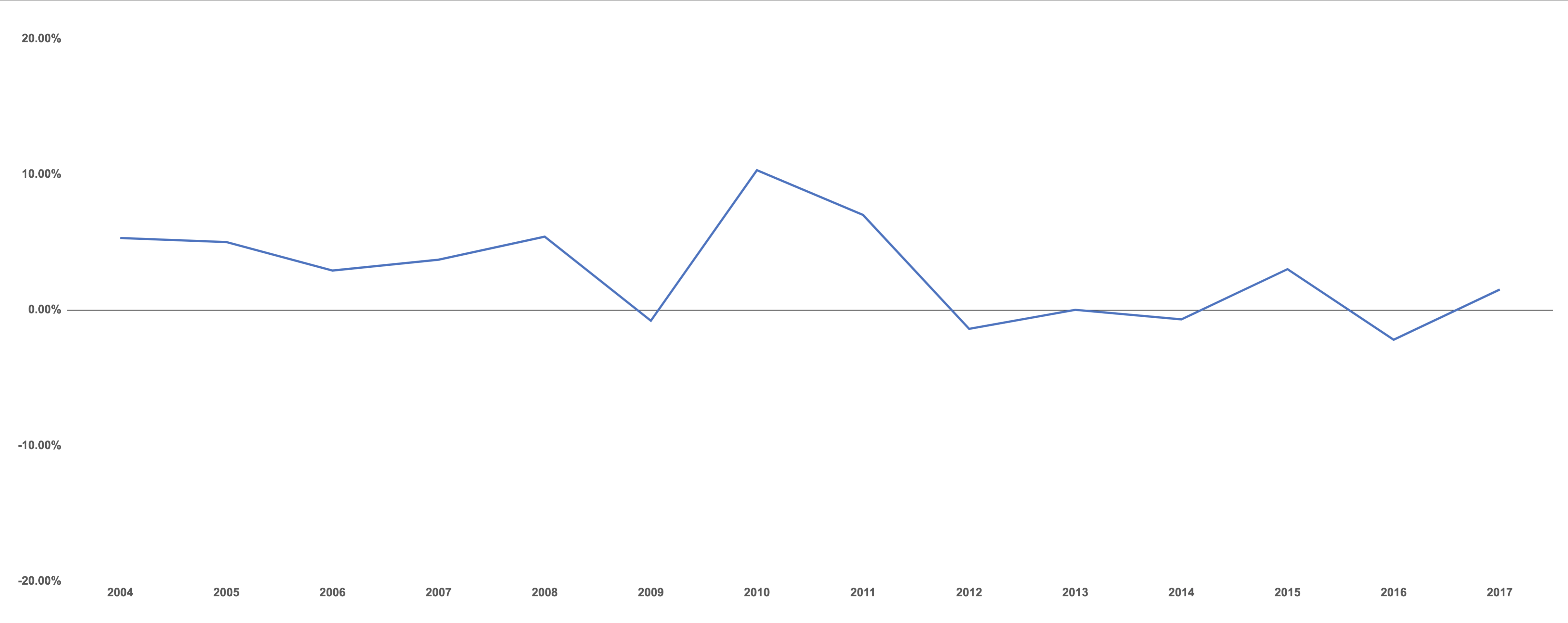The Ontario government’s attempt to discredit the former Liberal government by ordering a line-by-line review of the books has yielded its desired consequence: framing the Liberals as out-of-control big spenders.
The review, written by Ernst and Young, claims total real public spending in Ontario ballooned by 55% over the past 15 years. Without context, that looks like a shocking number, but as we know, context is everything.
For instance, buried in the report (p.12) there is a much more relevant piece of information: “[G]overnment expenditures as a portion of GDP have shrunk over the relevant 15 year time period for Ontario (CAGR of -0.7%).”
In other words, the government may be spending more, but the economy is growing at an even faster pace.
Key comparisons in the report that are meant to be examples of excessive spending growth are also deceptive.
For instance, on health care, the report states: “Real expenditure in hospitals has grown by 2.3% … while at the same time in-patient days have grown by 0.2%.”
Are in-patient days really an adequate measure of the need for more hospital services?
And on education, the report states: “Education real expenditure (K-12) has grown by 1.7% … while at the same time total student enrolment has declined by 0.5%.”
Is this meant to suggest that our schools don’t require any additional resources? That there is no school repair backlog? That all libraries are fully equipped and well staffed? That students with special needs are getting the supports they need to succeed?
Context is everything. For instance, the review reduces the complexity of 15 years of government spending into one headline shocker. But if you look at public spending growth rates in Ontario since 2003, you get an entirely different headline.
Check out this chart.
Figure 1 | Ontario’s Modest Expenditure Growth Rates Between 2003 and 2017

Source: Managing Transformation (p.8) and Ricardo Tranjan’s calculations
To understand this chart, a little context is in order. Let’s take you back to 2008-09, when the world economy was collapsing under the weight of sub-prime mortgage schemes that left countries like Greece bankrupt, with many more on the brink.
Everyone feared a repeat of the Great Depression. But here’s the thing we learned from the Great Depression: government austerity measures make things worse; government stimulus projects can help turn things around.
And so it was that citizens around the world looked to their governments to keep the economic order from imploding. And lo and behold, some governments in Canada paid attention.
Federally, even the fiscally conservative former Prime Minister Stephen Harper green lit a stimulus budget in those darkest of days.
Provincially, the Ontario government stuck with its plan to roll out full-day kindergarten and to invest in measures aimed at reducing child poverty by 25 per cent over a five-year period. It added to the federal government’s stimulus budget, too, helping Ontario weather the worst of the fiscal storm.
But by 2012 Ontario’s deficit had been growing and the governing Liberals commissioned former banker Don Drummond to write a report with this desired consequence: give us cover to implement an austerity budget. Drummond complied with a report recommending now fewer than 362 cuts.
In the ensuing years, the Ontario government took that report as gospel, implementing the majority of spending cuts.
In fact, if you look closely at the chart above, you will see total public spending in Ontario flatlined between 2012 and 2014. When you compare public spending in Ontario to other provinces, we spend the least, per capita.
Under pressure from the public to end the austerity agenda, former Premier Kathleen Wynne began to re-invest in public services. Those re-investments meant real improvements in quality of life for many in Ontario: it meant free OHIP+ prescriptions for anyone under 25; dental care for people who couldn’t afford it; minor increases in social assistance rates.
Those years of austerity had lasting consequences, unravelling the former McGuinty government’s progress on reducing child poverty—we never did reduce it by 25 per cent.
But all of this important context is now history. Ernst and Young wasn’t commissioned to give numbers in context.
It was commissioned to set the stage for this new provincial government to (a) attempt to confine the Liberal party of Ontario to political oblivion, (b) frame the governing party as a fiscal saviour, (c) and to set the stage for public service cuts, privatization, deregulation, means testing, automation, and a major battle with public sector unions.
The report makes a number of recommendations for the government to “optimize investment”, including:
Reducing the “regulatory and administrative cost burden”, which really means deregulation—putting the corporate foxes in charge of the hen house.
“Asset optimization”, which is double-speak for selling off public assets and privatizing public services. “Imposing competitive pressure on public sector providers”—yet another way of saying privatization.
“Workforce optimization” and “no involuntary job losses”, which is double-speak for public sector staffing cuts by attrition (downsizing in the 1990s).
“A modern relationship with everyone whose employment is largely funded by Provincial expenditures” would be what, precarious, on-demand jobs?
“A renewed approach to formal labour relations that invites labour to participate directly in the benefits of productivity improvement” simply signals a government ready to do battle with Ontario’s public sector workers.
“Driving efficiency”, which is really just priming the pump for major automation of the public sector. In fact, the report talks about “the opportunity and requirement for the Ontario public sector to significantly accelerate its leadership position in the Ontario economy to capture and provide further opportunity for maximizing the impact of Ontario in innovation in artificial intelligence, blockchain, machine learning, and associated technologies.”
Noticeably absent in the review was any discussion about Ontario’s revenue problem. There was no review of increased government tax expenditures to facilitate decades’ worth of tax cuts and tax credits. That wouldn’t fit the frame.
This wasn’t a line-by-line financial review. This was a frame job.
Trish Hennessy is director of the Canadian Centre for Policy Alternatives’ Ontario office (CCPA-Ontario). Ricardo Tranjan is a senior researcher with the CCPA-Ontario.


